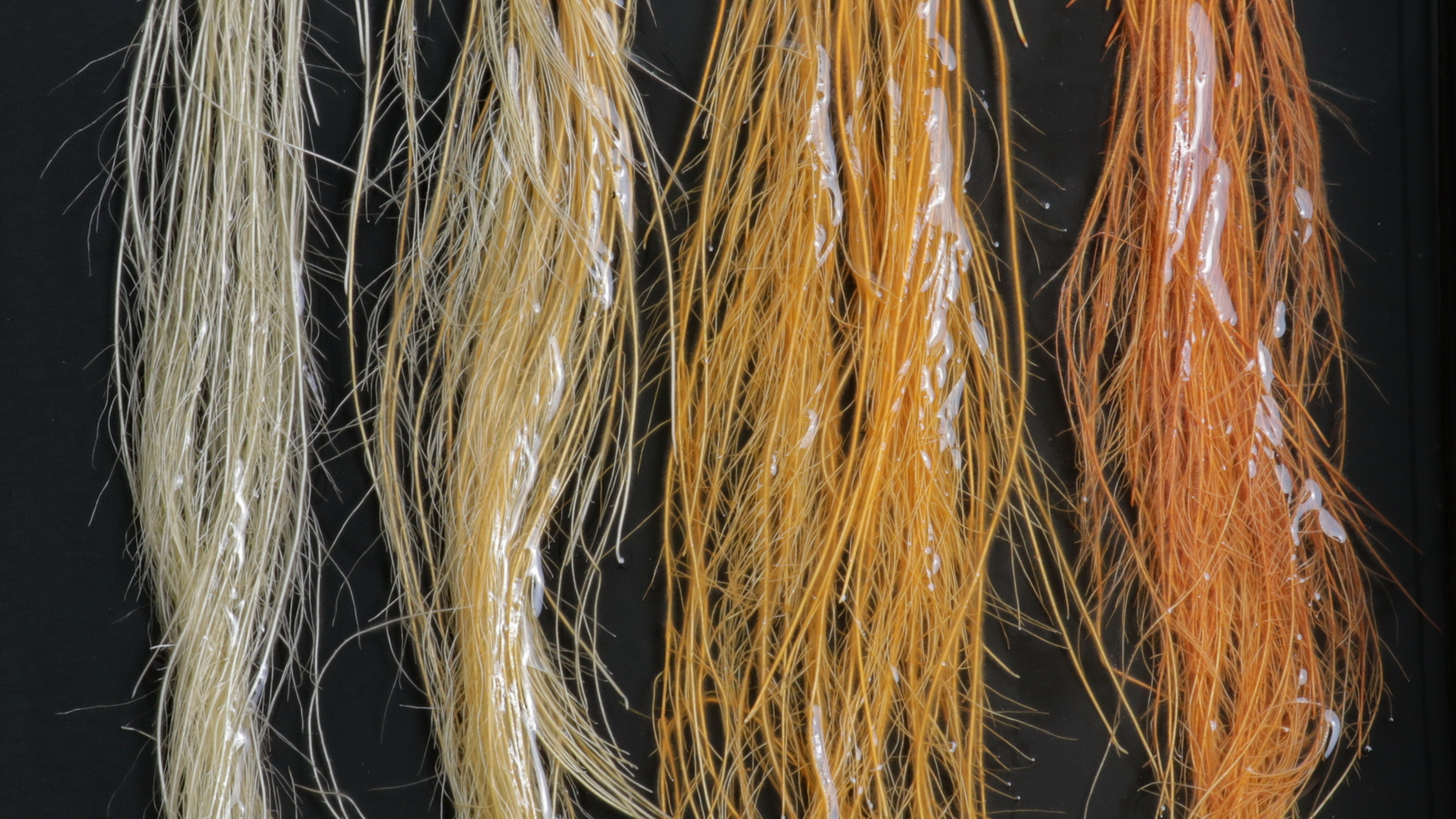Iron plaque formation on roots of wetland plants
During the lock-down, it was difficult for us to justify maintenance of plant culture so we thought about alternative approaches to test our hypotheses. In this way, we would be ready to resume our experimental work once some lab work was again permitted.
We have been working with artificial roots which is basically very thin tubes made from silicone rubber. Such tubes have more or less the same permeability to molecular oxygen so that we can mimic the slow loss of oxygen to the surrounding soil, a process called radial oxygen loss. The loss of oxygen happens in situations where the external oxygen concentration is low (such as in waterlogged soils or sediment). Once the oxygen is lost to the rhizosphere, it may feed microbial mineralization or oxidize reduces substances such as reduced manganese or iron. In the latter case, formation of metal plaques (crusts of manganese or iron oxides) occurs on the root surfaces.

Photo of roots from a salt tolerant species of Puccinellia. The clear effect of pH in the formation of plaques is very evident (from left: white roots without plaques since the solution did not contain reduced iron, and then pH 4, 6 and 8 in the presence of high iron concentrations).
Elisa has studied the effect of pH and salinity for the plaque formation and also how plaque affect radial oxygen loss. She is wrapping up this work since her Marie-Curie grant is running out by the end of August. Surely, she will have data to analyse for many months to come.
We are constantly thinking on how to make good use of the artificial roots (the silicone rubber tubes) as these enable us to make many more treatments (or replications) since we do not need to grow plants to full maturity before we can study the processes influenced by radial oxygen loss from roots of wetland plants.

1 mm tubes of silicone rubber mimicking roots of wetland plants. The tubes have been exposed to various combination of iron centration, pH and salinity with clear effects on plaque formation.
We have been working with artificial roots which is basically very thin tubes made from silicone rubber. Such tubes have more or less the same permeability to molecular oxygen so that we can mimic the slow loss of oxygen to the surrounding soil, a process called radial oxygen loss. The loss of oxygen happens in situations where the external oxygen concentration is low (such as in waterlogged soils or sediment). Once the oxygen is lost to the rhizosphere, it may feed microbial mineralization or oxidize reduces substances such as reduced manganese or iron. In the latter case, formation of metal plaques (crusts of manganese or iron oxides) occurs on the root surfaces.
Photo of roots from a salt tolerant species of Puccinellia. The clear effect of pH in the formation of plaques is very evident (from left: white roots without plaques since the solution did not contain reduced iron, and then pH 4, 6 and 8 in the presence of high iron concentrations).
Elisa has studied the effect of pH and salinity for the plaque formation and also how plaque affect radial oxygen loss. She is wrapping up this work since her Marie-Curie grant is running out by the end of August. Surely, she will have data to analyse for many months to come.
We are constantly thinking on how to make good use of the artificial roots (the silicone rubber tubes) as these enable us to make many more treatments (or replications) since we do not need to grow plants to full maturity before we can study the processes influenced by radial oxygen loss from roots of wetland plants.
1 mm tubes of silicone rubber mimicking roots of wetland plants. The tubes have been exposed to various combination of iron centration, pH and salinity with clear effects on plaque formation.

